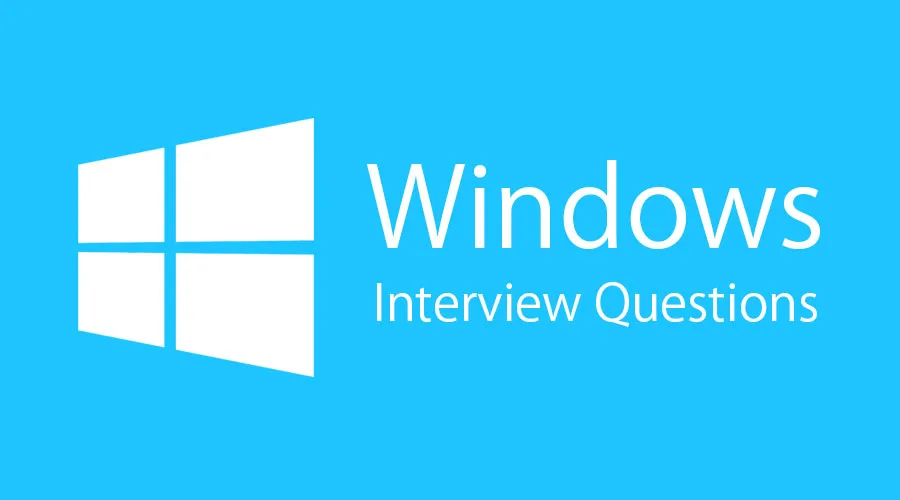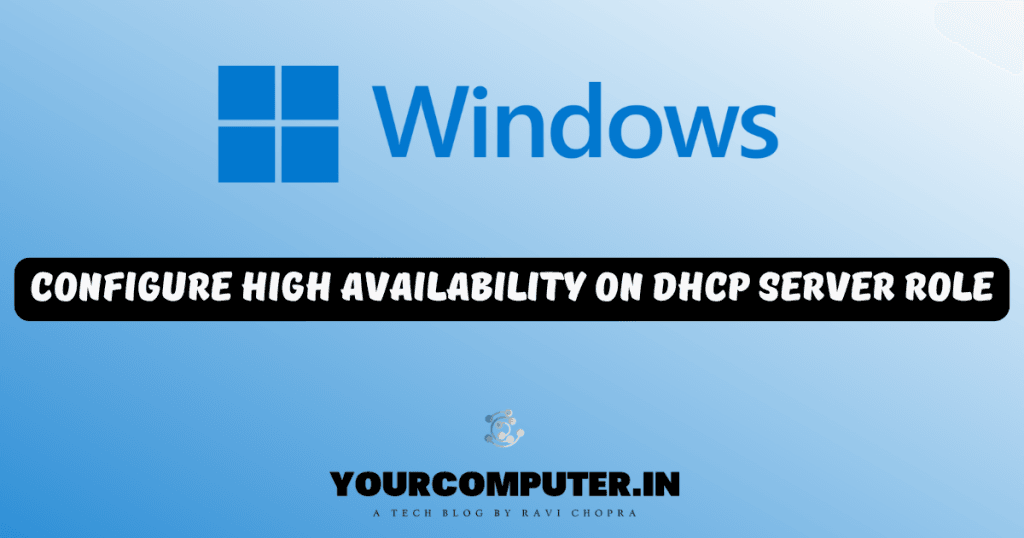Here are some Windows cluster Interview Questions and Answers for Windows administrator
What is Clustering?
Clustering is a technology, which is used to provide High Availability for mission-critical applications. A Windows Cluster is a group of independent computers that work together to enhance the availability and scalability of services and applications. It ensures high availability by distributing and managing the workload across multiple servers. We can configure the cluster by installing the MCS (Microsoft cluster service) component from Add Remove programs, which can only be available in Enterprise Edition and Datacenter Edition.
Types of Clusters?
In Windows, we can configure two types of clusters
1. NLB (network load balancing) cluster for balancing load between servers. This cluster will not provide any high availability. Usually preferable at edge servers like web or proxy.
2. Server Cluster (Failover Cluster): This provides High availability by configuring active-active or active-passive clusters. In 2 node active-passive cluster one node will be active and one node will be on stand-by. When an active server fails the application will FAILOVER to stand by the server automatically. When the original server backs we need to FAILBACK the application
What is the difference between Network Load Balancing (NLB) and Failover Clustering?
NLB distributes network traffic across multiple servers to balance the load, while Failover Clustering provides high availability by transferring workloads between servers in case of a failure.
What is a Quorum?
A shared storage needs to be provided for all servers which keeps information about clustered applications and session states and is useful in a FAILOVER situation. This is very important if the Quorum disk fails entire cluster will fail.
Why Quorum is necessary?
When network problems occur, they can interfere with communication between cluster nodes. A small set of nodes might be able to communicate together across a functioning part of a network, but might not be able to communicate with a different set of nodes in another part of the network. This can cause serious issues. In this “split” situation, at least one of the sets of nodes must stop running as a cluster.
To prevent the issues that are caused by a split in the cluster, the cluster software requires that any set of nodes running as a cluster must use a voting algorithm to determine whether, at a given time, that set has a quorum. Because a given cluster has a specific set of nodes and a specific quorum configuration, the cluster will know how many “votes” constitute a majority (that is, a quorum). If the number drops below the majority, the cluster stops running. Nodes will still listen for the presence of other nodes, in case another node appears again on the network, but the nodes will not begin to function as a cluster until the quorum exists again.
For example, in a five-node cluster that is using a node majority, consider what happens if nodes 1, 2, and 3 can communicate with each other but not with nodes 4 and 5. Nodes 1, 2, and 3 constitute a majority, and they continue running as a cluster. Nodes 4 and 5 are a minority and stop running as a cluster, which prevents the problems of a “split” situation. If node 3 loses communication with other nodes, all nodes stop running as a cluster. However, all functioning nodes will continue to listen for communication, so that when the network begins working again, the cluster can form and begin to run.
Different types of Quorum in Windows Server?
1. Node Majority – Used when an Odd number of nodes are in the cluster.
2. Node and Disk Majority – Even number of nodes(but not a multi-site cluster)
3. Node and File Share Majority – Even number of nodes, multi-site cluster
4. Node and File Share Majority – Even number of nodes, no shared storage
Different types of Quorum in Windows Server 2003?
Standard Quorum: As mentioned above, a quorum is simply a configuration database for MSCS, and is stored in the quorum log file. A standard quorum uses a quorum log file that is located on a disk hosted on a shared storage interconnect that is accessible by all members of the cluster.
Standard quorums are available in Windows NT 4.0 Enterprise Edition, Windows 2000 Advanced Server, Windows 2000 Datacenter Server, Windows Server 2003 Enterprise Edition, and Windows Server 2003 Datacenter Edition.
Majority Node Set Quorums A majority node set (MNS) quorum is a single quorum resource from a server cluster perspective. However, the data is actually stored by default on the system disk of each member of the cluster. The MNS resource takes care to ensure that the cluster configuration data stored on the MNS is kept consistent across the different disks.
Majority node set quorums are available in Windows Server 2003 Enterprise Edition, and Windows Server 2003 Datacenter Edition.
Explain about each Quorum type?
Node Majority: Each node that is available and in communication can vote. The cluster functions only with a majority of the votes, that is, more than half.
Node and Disk Majority: Each node plus a designated disk in the cluster storage (the “disk witness”) can vote, whenever they are available and in communication. The cluster functions only with a majority of the votes, that is, more than half.
Node and File Share Majority: Each node plus a designated file share created by the administrator (the “file share witness”) can vote, whenever they are available and in communication. The cluster functions only with a majority of the votes, that is, more than half.
No Majority: Disk Only: The cluster has a quorum if one node is available and in communication with a specific disk in the cluster storage.
How is the quorum information located on the system disk of each node kept in synch?
The server cluster infrastructure ensures that all changes are replicated and updated on all members in a cluster.
Can this method be used to replicate application data as well?
No, that is not possible in this version of clustering. Only Quorum information is replicated and maintained in a synchronized state by the clustering infrastructure.
Can I convert a standard cluster to an MNS cluster?
Yes. You can use Cluster Administrator to create a new Majority Node Set resource and then, on the cluster properties sheet Quorum tab, change the quorum to that Majority Node Set resource.
What is the difference between a geographically dispersed cluster and an MNS cluster?
A geographic cluster refers to a cluster that has nodes in multiple locations, while an MNS-based cluster refers to the type of quorum resources in use. A geographic cluster can use either a shared disk or MNS quorum resource, while an MNS-based cluster can be located in a single site, or span multiple sites.
What is the maximum number of nodes in an MNS cluster?
Windows Server 2003 supports 8-node clusters for both Enterprise Edition and Datacenter Edition. In Server 2008 it is 16.
Do I need special hardware to use an MNS cluster?
There is nothing inherent in the MNS architecture that requires any special hardware, other than what is required for a standard cluster (for example, there must be on the Microsoft Cluster HCL). However, some situations that use an MNS cluster may have unique requirements (such as geographic clusters), where data must be replicated in real time between sites.
Does a cluster-aware application need to be rewritten to support MNS?
No, using an MNS quorum requires no change to the application. However, some cluster-aware applications expect a shared disk (for example SQL Server 2000), so while you do not need shared disks for the quorum, you do need shared disks for the application.
Does MNS get rid of the need for shared disks?
It depends on the application. For example, clustered SQL Server 2000 requires a shared disk for data. Remember, MNS only removes the need for a shared disk quorum.
What is Cluster-Aware Updating (CAU)?
Cluster-Aware Updating is a feature that simplifies the patching and updating process for Windows Clusters. It coordinates the update process to minimize service downtime by moving workloads across nodes while updating others
What does a failover cluster do in Windows Server?
A failover cluster is a group of independent computers that work together to increase the availability of applications and services. The clustered servers (called nodes) are connected by physical cables and by software. If one of the cluster nodes fails, another node begins to provide service (a process known as failover). Users experience a minimum of disruptions in service.
How do you perform a rolling upgrade in a Windows Cluster?
A rolling upgrade involves upgrading nodes one by one without downtime. Steps include:
- Evict a node from the cluster.
- Upgrade the operating system.
- Rejoin the node to the cluster.
- Repeat for each node.
What was the new functionality does failover clustering provides in Windows Server 2008?
New validation feature. With this feature, you can check that your system, storage, and network configuration is suitable for a cluster.
Support for GUID partition table (GPT) disks in cluster storage. GPT disks can have partitions larger than two terabytes and have built-in redundancy in the way partition information is stored, unlike master boot record (MBR) disks.
What happens to a running Cluster if the quorum disk fails in the Windows Server Cluster?
The cluster continues to work but failover will not happen in case of any other failure in the active node.
What happens to a running Cluster if the quorum disk fails in Windows Server 2003 Cluster?
In Windows Server 2003, the Quorum disk resource is required for the Cluster
to function. In your example, if the Quorum disk suddenly became unavailable
to the cluster then both nodes would immediately fail and not be able to
restart the clussvc.
In that light, the Quorum disk was a single point of failure in a Microsoft
Cluster implementation. However, it was usually a fairly quick workaround to
get the cluster back up and operational. There are generally two solutions
to that type of problem.
1. Determine why the Quorum disk failed and repair it.
2. Reprovision a new LUN, present it to the cluster, and assign it a drive
letter and format. Then start one node with the /FQ switch and through
cluadmin designate the new disk resource as the Quorum. Then stop and
restart the clussvc normally and then bring online the second node.
That’s it for Windows Cluster Interview Questions and Answers
For more Interview questions and answers please refer to the below Articles
Top 50 Active Directory Interview questions with answers
Top 35 Azure AD Interview Questions and Answers
25 Challenging VMware Interview Questions with Detailed Answers
Top 40 Wintel Interview Questions and Answers
Top 10 AWS Interview Questions and Answers
Top 10 Google Cloud Platform Interview Questions and Answers
25 Must-Know Kubernetes Interview Questions and Answers
Top 10 Azure Cloud Interview Questions You Should Know
- Why should you automate Active Directory cleanup? - 17 June 2025
- Troubleshooting: Unable to Add Instance Failover Group to Azure SQL Managed Instance - 4 March 2025
- 10 Azure Virtual Desktop (AVD) Cost-Optimization Strategies for 2025 💡💰 - 22 February 2025



Comments are closed.